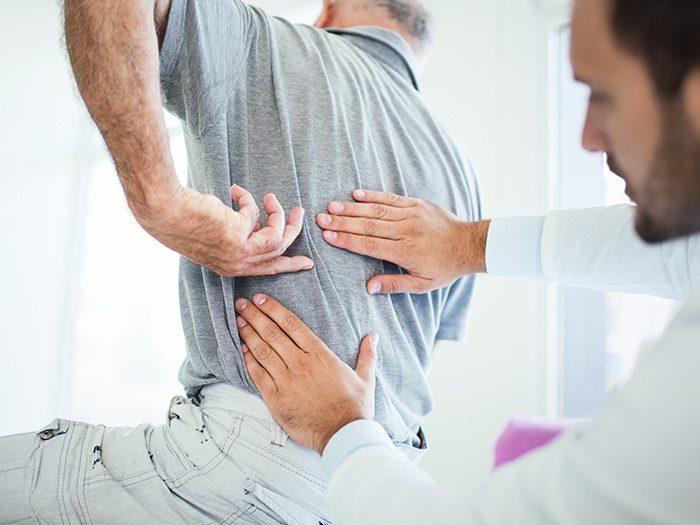3 Reasons Why Simple Workers’ Comp Claims Result in Catastrophic Costs

Employers and payors dread the cases sometimes called “creeping catastrophic” claims — the simple injury such as a strain or sprain that never seems to heal. The injured worker’s pain persists or worsens, prompting numerous procedures, treatments and often extended use of pain medication. Medical and indemnity costs keep piling up, and there’s no clear end in sight.
These cases are fairly rare, but unfortunately they account for a disproportionate share of workers’ comp costs industry wide. There are three factors that can play a significant role in what makes these claims so difficult to resolve.
1) Psychophysiology of pain
Brain and body chemistry have a significant impact on pain response. Any time that you experience pain, you are experiencing both a physical and an emotional response to the pain stimulus, even though you don’t even realize it.
The psyche is so powerful that it can even cause genuine pain based solely on how severe an injury looks to the injured person. In a much-discussed case in the UK, a 29-year-old construction worker experienced excruciating pain after impaling his foot on a 6-inch nail, requiring fentanyl and midazolam to block the pain and sedate him enough to extract the nail from his boot sole. Once doctors removed his boot, however, they were startled to discover that the nail had slipped cleanly between his toes, leaving the foot completely unharmed. Yet there was nothing fake about his pain.
The interaction of mind and body are complex. Psychological stress causes activation of the autonomic nervous system and response pathways, leading to the release of catecholamines (stress hormones) into the bloodstream. Emotional stressors, and an individual’s perception of the severity of those stressors, are known to significantly lower the pain threshold, as well as exacerbate or prolong emotional reactivity and the accompanying physiological response.
Stop trying to “fix” the source of the pain, and instead focus on giving the injured worker the tools to manage his or her own pain and gain better control of their own physiological response.
So for someone who is experiencing stress, anxiety, depression or other emotional turmoil concurrently with the injury, the negative emotions are going to intensify — and potentially prolong — the pain experience.
This mind-body interaction can affect not just the pain response but also the body’s ability to heal. Psychological distress may impair muscle growth and repair processes by prolonging the presence of stress hormones, like cortisol, that impair immunity and inhibit the action of anabolic factors that support healing.
Understanding the psyche’s role in pain and addressing the sources of emotional distress will go a long way toward helping practitioners and case managers better meet the needs of injured workers.
2) Outmoded treatment strategies
The medical community has a linear approach to injury: Identify the cause of the problem, then fix it. For workers’ comp patients with ongoing pain, the pursuit of that goal may include procedure after procedure, a range of diagnostic tests, multiple surgeries and a long-term course of opioids — all without an end to the pain.
These cases may require practitioners to pivot and change objectives. Stop trying to “fix” the source of the pain, and instead focus on giving the injured worker the tools to manage his or her own pain and gain better control of their own physiological response.
 Numerous studies bear out the potential for pain patients to influence their pain levels. One Stanford University study used functional magnetic resonance imaging, which measures activity in different areas of the brain, to see whether patients could learn to control a brain region involved in pain.
Numerous studies bear out the potential for pain patients to influence their pain levels. One Stanford University study used functional magnetic resonance imaging, which measures activity in different areas of the brain, to see whether patients could learn to control a brain region involved in pain.
Study subjects were shown the pain-related activity in their own brains and were given visualization instructions to manipulate the pain activity. The results were overwhelmingly positive, with some subjects reporting a 30 to 40 percent reduction in pain level.
Various disciplines have shown promise for helping patients control their own pain, including cognitive behavioral therapy (CBT) and mindfulness practices such as meditation and yoga, as well as biofeedback.
Mindfulness techniques help injured workers shift the way they think about pain, moving away from a goal-oriented mindset (I want to stop the pain) toward an attitude of awareness and exploration. It’s about acknowledging the pain and understanding it. Where, exactly, is the pain? What happens when I relax the area experiencing the pain? How does it impact the pain if I engage deep breathing exercises?
Training the brain to respond differently to pain signals — to engage the pain rather than try to avoid it — may be more effective than traditional physical therapy and medication and has been shown to have lasting effects with continued practice.
3) Opioids
For moderate musculoskeletal injuries, opioids do more harm than good. Opioids block pain, but the body reacts by increasing the number of receptors working to get the pain signal through to the brain.
Prolonged use actually increases sensitivity to pain and exacerbates any pain related to the original injury. That’s why, when the drug wears off, a person experiences increased pain.
When opioids are stopped, pain sensitivity should revert to normal within a few days. But most people don’t understand that and take more opioids instead, trying to get back to the pain-free state. As use continues, the drug becomes less and less effective. The pain keeps increasing — not because of the injury, but because of the opioids themselves. It’s fairly easy to understand how so many people get addicted.
Opioids make pain worse in other ways. Our bodies have natural opioids called endorphins. If the body becomes conditioned to opioid pain medication, its ability to create and use its natural endorphins is compromised — so the body loses its ability to reduce pain on its own.
Blocking pain also prevents injured workers from developing the mental resilience they need in order to work through an injury and achieve recovery.
By making pain an all-or-nothing condition, they have no motivation to learn the coping skills and healthy pain-management techniques that might have helped them recover successfully. Instead, they’re trapped in the vicious pain cycle perpetuated by opioids.
For most non-complex injuries, it’s typically possible to manage with non-opioid analgesics like acetaminophen, ibuprofen or a combination of the two. If pain is disrupting sleep, a low-dose opioid for one or two nights can help ease the pain without risking a slide into the opioid pain cycle.
It’s in the best interest of injured workers if employers and payers give workers the information and support they need to recover from injury without opioids. &










